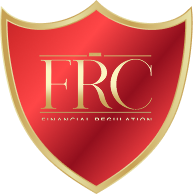In the world of investment, managing risk is just as important as maximising returns. Quantitative risk modelling is a key tool in modern portfolio management, helping investors identify, measure, and mitigate financial risks. By applying mathematical models and statistical techniques, investment managers can optimise asset allocation, control volatility, and improve decision-making.
This article explores the fundamentals of quantitative risk modelling, its importance in portfolio management, key risk models, and real-world applications.
Understanding Quantitative Risk Modelling
Quantitative risk modelling refers to the use of mathematical and statistical techniques to analyse financial risk. It helps portfolio managers assess potential losses, volatility, and other uncertainties that can impact investment returns.
Enhances risk-adjusted returns by balancing risk and reward.
Improves asset allocation using data-driven decision-making.
Identifies hidden risks that traditional analysis might overlook.
Helps regulatory compliance by quantifying potential losses.
Market Risk – The risk of losses due to market fluctuations.
Credit Risk – The risk that borrowers may default on debt.
Liquidity Risk – The risk of not being able to sell assets quickly.
Operational Risk – Risks arising from internal failures (e.g., fraud, system failures).
Systemic Risk – The risk of collapse in the broader financial system.
Key Quantitative Risk Models in Portfolio Management
Definition: VaR measures the potential loss of an investment over a specific time period with a given confidence level.
Formula:
VaR=Portfolio Value×Standard Deviation×Z-scoreVaR = \text{Portfolio Value} \times \text{Standard Deviation} \times Z \text{-score}
Example:
A portfolio with £1 million, a 5% daily VaR at 95% confidence level means that there is a 5% chance the portfolio will lose more than £50,000 in a single day.
Strengths:
✔ Easy to understand
✔ Widely used in risk management
Limitations:
✖ Assumes normal distribution of returns
✖ Fails to capture extreme risks (e.g., financial crises)
2. Conditional Value at Risk (CVaR) – Expected Shortfall
Definition: CVaR measures the expected loss beyond the VaR threshold.
Why it’s important:
Provides a better measure of tail risk (extreme losses).
More useful in stress testing and scenario analysis.
Example:
If a portfolio’s VaR at 95% confidence is £50,000, but its CVaR is £80,000, it means that in the worst 5% of cases, the average loss will be £80,000 instead of £50,000.
3. Monte Carlo Simulation
Definition: A computational technique that uses random simulations to predict portfolio risk and return outcomes.
How it works:
Generates thousands of possible market scenarios.
Uses historical data to simulate portfolio performance under different conditions.
Provides a range of probable outcomes rather than a single prediction.
Example:
A hedge fund uses Monte Carlo simulations to estimate how a portfolio might perform under various economic conditions, helping in stress testing and risk planning.
Strengths:
✔ Accounts for non-normal distributions of returns
✔ Helps with stress testing and tail-risk management
Limitations:
✖ Computationally intensive
✖ Requires accurate input data
4. Modern Portfolio Theory (MPT) and the Efficient Frontier
Definition: MPT optimises portfolio allocation by balancing risk and return.
Key concept:
Diversification reduces risk without sacrificing expected returns.
Efficient Frontier: A curve representing the best possible risk-return combinations.
Formula:
The portfolio’s expected return:
E(Rp)=∑wiRiE(R_p) = \sum w_i R_i
Where:
E(Rp)E(R_p) = Expected portfolio return
wiw_i = Weight of asset ii
RiR_i = Expected return of asset ii
Example:
An investor builds a 50% equity and 50% bond portfolio to optimise returns while minimising risk.
Strengths:
✔ Scientifically proven risk-return framework
✔ Encourages diversification
Limitations:
✖ Assumes markets are rational and efficient
✖ Relies on historical data, which may not predict future risks
Risk Metrics Used in Quantitative Risk Modelling
Measures how much asset prices fluctuate over time.
High standard deviation = High risk
Low standard deviation = Stable investment
Compares an asset’s volatility to the overall market volatility.
Beta > 1: More volatile than the market
Beta < 1: Less volatile than the market
Calculates return per unit of risk.
SharpeRatio=(Rp−Rf)σpSharpe Ratio = \frac{(R_p - R_f)}{\sigma_p}
Where:
RpR_p = Portfolio return
RfR_f = Risk-free rate
σp\sigma_p = Portfolio standard deviation
Example:
If a fund returns 10% with 5% volatility, while the risk-free rate is 2%, the Sharpe Ratio = 1.6, indicating a good risk-adjusted return.
Applications of Quantitative Risk Modelling in Portfolio Management
Helps investors optimise portfolio weights across equities, bonds, real estate, and alternative assets.
Reduces overall portfolio risk by spreading investments across uncorrelated assets.
Helps assess whether an investment outperformed the market on a risk-adjusted basis.
Used by hedge funds and institutional investors to rank portfolio performance.
Models help test portfolios under different economic conditions (e.g., recessions, inflation shocks).
Central banks and regulatory bodies use stress tests to evaluate financial system resilience.
Uses real-time data to execute thousands of trades per second based on risk metrics.
Firms use machine learning models to improve risk-adjusted returns.
Challenges in Quantitative Risk Modelling
Historical data may not predict future risk accurately.
Data biases can lead to incorrect risk assessments.
Over-reliance on models can lead to unexpected losses.
Example: 2008 Financial Crisis – Many risk models failed to anticipate systemic risk.
Black swan events (e.g., COVID-19, financial crises) cannot be fully captured in models.
Risk models must be continuously updated to reflect new market conditions.
Quantitative risk modelling is essential for effective portfolio management. By applying statistical models and financial theories, investors can better assess risk, optimise returns, and mitigate potential losses.
✔ Value at Risk (VaR) and Monte Carlo Simulations help measure financial risk.
✔ Modern Portfolio Theory (MPT) promotes diversification and risk-return optimisation.
✔ Sharpe Ratio and Beta are essential metrics for evaluating risk-adjusted performance.
✔ Stress testing and scenario analysis improve portfolio resilience against market shocks.
By integrating quantitative risk models into investment strategies, portfolio managers can navigate market uncertainties and achieve long-term financial success.
Those entering private banking often obtain the Investment Advisor Certification to strengthen their knowledge.
Be the first to know about new class launches and announcements.


Financial writer and analyst Ron Finely shows you how to navigate financial markets, manage investments, and build wealth through strategic decision-making.
